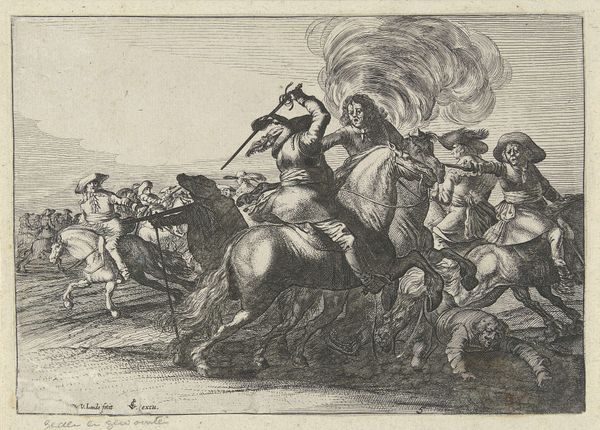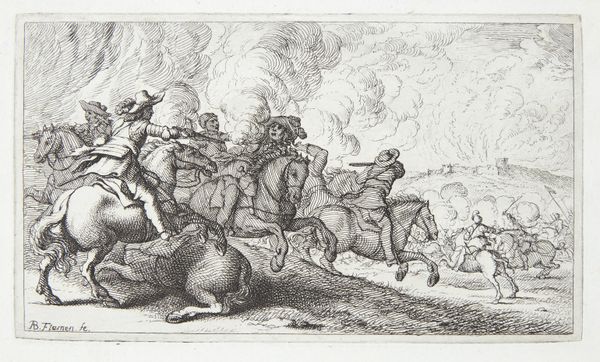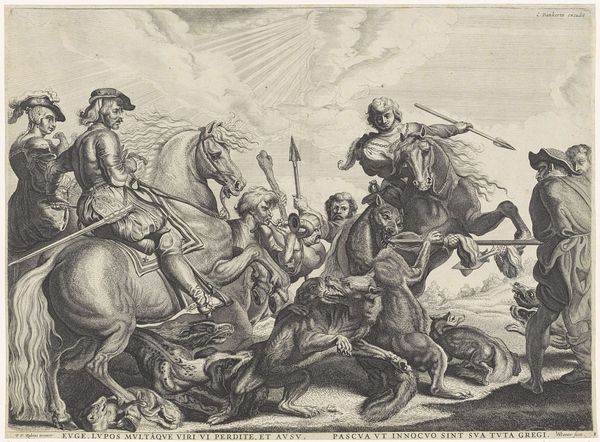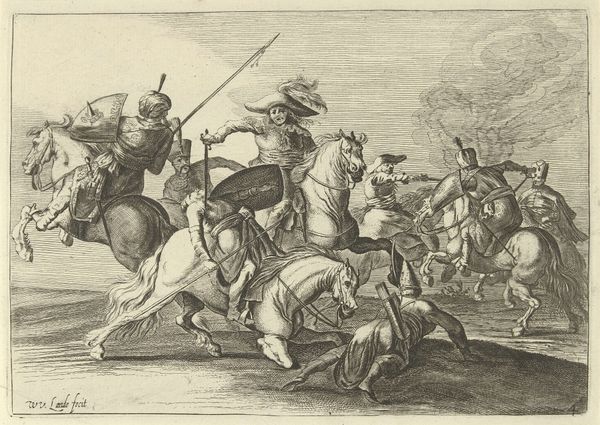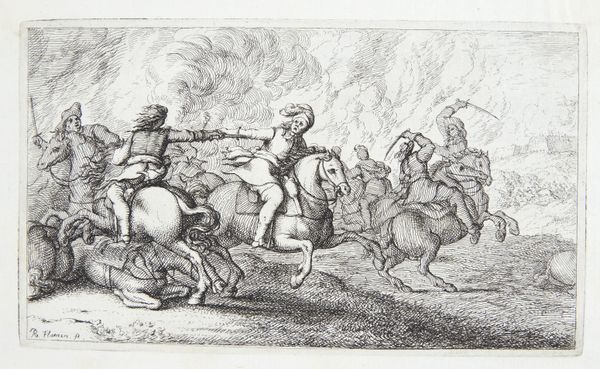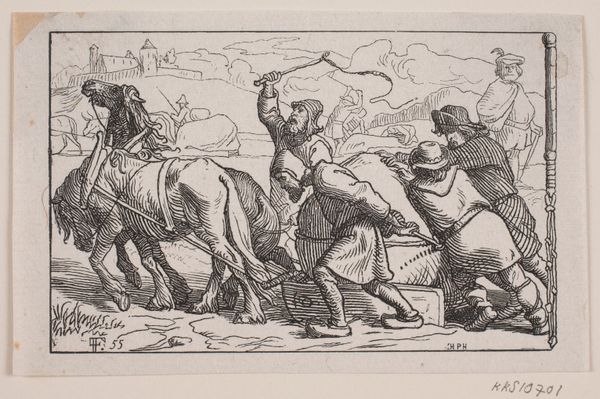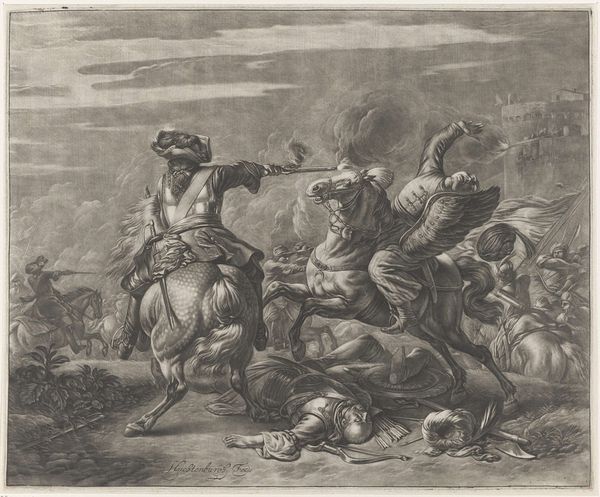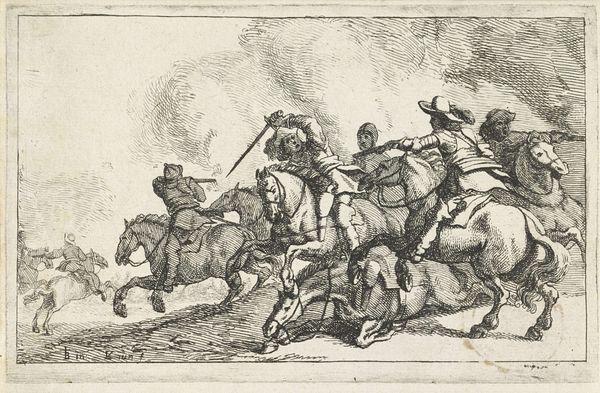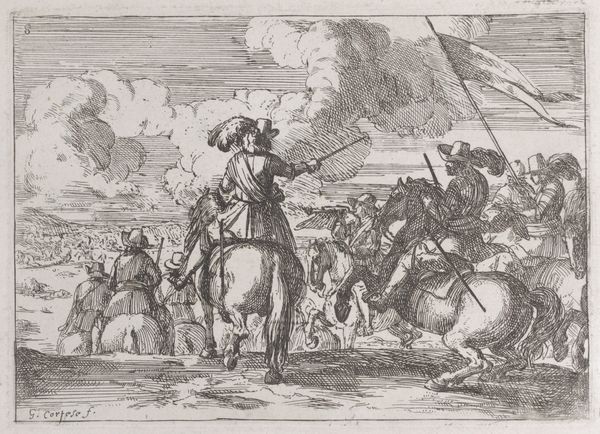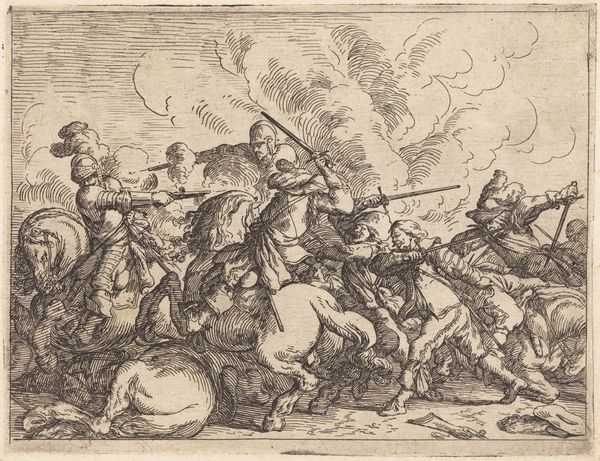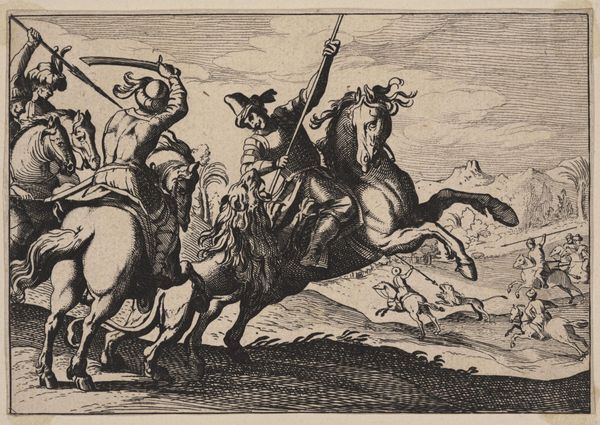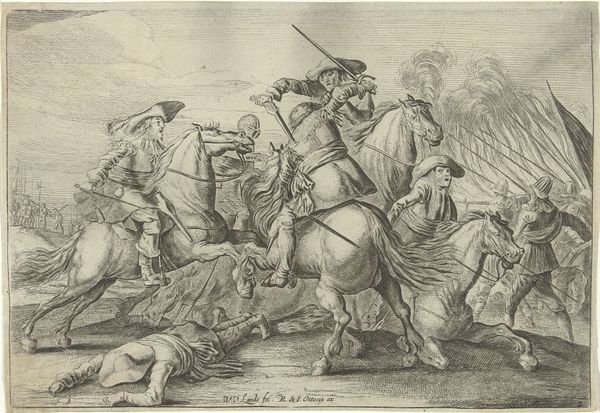
print, engraving
#
narrative-art
#
baroque
# print
#
landscape
#
figuration
#
line
#
genre-painting
#
history-painting
#
engraving
#
miniature
Dimensions: height 142 mm, width 203 mm
Copyright: Rijks Museum: Open Domain
Curator: Before us we have "Slagveldscène met vechtende ruiters"—"Battlefield Scene with Fighting Riders"—a print attributed to Willem van Lande, possibly from between 1635 and 1751. Editor: Wow, it's a frenzy of line work! It reminds me of witnessing raw, visceral energy exploding onto the page, but also organized violence by ruling powers on horseback. The stark contrast emphasizes the chaos and carnage...but with so much detail crammed into a small space. How does the work get produced, do you know about the specific intaglio methods to create it? Curator: Well, considering it's an engraving, lines are incised into a plate—likely copper—with a tool called a burin. Think of the artist pushing metal out of the way to create those furrows which hold the ink, transferring it to paper. In some sense, it shows manual labor—a kind of repetitive physical engagement and control needed for rendering depth and shading. And it does this with an intensity of human cruelty! Editor: The final product belies that control you're describing. I can't help but get drawn in by the sheer mania captured! Each rider's grimace, the horses in such visible terror...it feels like Lande is inviting us into the psychological experience of battle itself. Curator: Absolutely, even those more refined line work that make for landscapes and Baroque flourishes have violent elements to it! But what’s interesting is this invites us to think about the historical appetite for such scenes of conflict. What purpose did they serve, this reproduction in miniature scale through labor intensive work? Was it about glorifying warfare? Perhaps a cautionary tale? Maybe an item for sale, readily accessible? Editor: It speaks to a deeper issue—consumption of violence through art. Consider the socio-political climate when such images were circulated, not just aesthetic considerations—and the costs of reproducing and purchasing images with certain material demands. What about the engraver's intentions too; were they simply commissioned, or driven by personal convictions to represent violent encounters? Curator: Good question! Ultimately, the print's compelling. Even while grappling with complex readings about process, power, and intention. It resonates powerfully regardless. Editor: I agree. Its raw depiction invites a critical eye to the whole messy business behind representing it—even now!
Comments
No comments
Be the first to comment and join the conversation on the ultimate creative platform.
